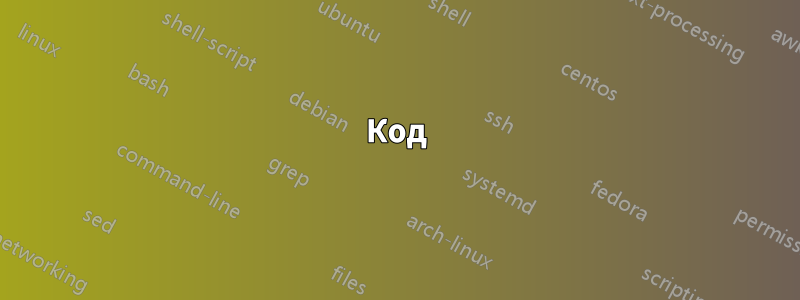
Мне нужно многострочное уравнение (желательно даже центрированное относительно соответствующего столбца, поскольку однострочные уравнения, которые у меня уже есть и используют [ и ] или $$ $$, не центрированы) в части описания \newglossaryentry.
Итак, по сути, я хочу, чтобы в центре столбца глоссария располагались однострочные и многострочные уравнения.
Спасибо!
P.S. Я подумал, что смогу что-то из этого почерпнуть:введите описание ссылки здесь но я не мог...
\documentclass[twoside]{amsbook}
\usepackage[colorlinks]{hyperref}
\usepackage[xindy,counter=section,sanitize={name=false},style=index]{glossaries} %[toc]% %\glstoctrue
\usepackage{nomencl}
\makeglossaries %has to be after \usepackage{hyperref}
%
\glossarystyle{long3col}
%\glossarystyle{super3col}
\setlength{\glsdescwidth}{0.6\textwidth}
\setlength{\glspagelistwidth}{0.15\textwidth}
\newglossaryentry{AffineVariety}
{
name=Affine Variety,
description={Affine varieties are defined to be anything that looks like the set of common zeros of a collection of polynomials. E.g., $A = \mathbb{C}[X]$ is the ring of polynomials in $X$ with complex coefficients. Let $f=X-1 \in A$ and its set of zeros, $Z(\{f\})=\{1\}$ is an example of an affine variety.}
}
\newglossaryentry{RemovableSingularity}
{
name=Removable Singularity,
description={Formally, if $U \subset \mathbb{C}$ is an open subset of the complex plane $\mathbb{C}$, and $a \in U$, and $f: U\backslash\{a\} \to \mathbb{C}$ a holmorphic function, then $a$ is a removable singularity for $f$ if there exists a holomorphic function $g: U \to \mathbb{C}$, coinciding with $f$ on $U\backslash\{a\}$. It is said that $f$ is holomorphically extended over $U$ if such a $g$ exists. A simple example is the function $$f(z) = \frac{\sin(z)}{z}$$ at $z=0$ (even this: \[f(z) = \frac{\sin(z)}{z}\] doesn't center.). The singularity, due to the indeterminate form, can be removed by defining $f(0)=1$, which is the limit of $f$ as $z$ approaches zero.}
}
\newglossaryentry{TetrahedralCoordinates}
{
name=Tetrahedral Coordinates,
description={Coordinates useful in plotting projective three-dimensional curves of the form $f(x_0,x_1,x_2,x_3)=0$, which are defined by
% \begin{minipage}[t][5cm][b]{0,5\textwidth}
% \ensuremath{
% $$ {\setlength\arraycolsep{0.2em} \begin{eqnarray} x_0 = 1-z-\sqrt{2}\,x \\ x_1 = 1 - z + \sqrt{2}\,x \\ x_2 = 1+ z+ \sqrt{2}\,y \\ x_3 = 1 + z - \sqrt{2}\,y \end{eqnarray} } $$
% \end{minipage}
% }
}
}
\makeglossaries
\begin{document}
Consider the equation
\begin{equation}
e = m * c^2
\end{equation}
in which \gls{AffineVariety} is here, but not here \gls{TetrahedralCoordinates} oh and this \gls{RemovableSingularity}.
\printglossary
\end{document}
решение1
Оборачивание содержимого в minipageсреде позволяет отображать математику в центре longtableсреды. Но делать это каждый раз было бы утомительно, негибко и подвержено ошибкам.
Лучшим вариантом будет использование \newcolumntypeкоманды пакета arrayдля настройки нового типа столбца для табличных сред, который затем можно будет использовать для определения нового стиля глоссария, my3col. Этот стиль будет основан на , long3colно с измененным типом столбца для описания.
Я загрузил glossariesранее, чтобы он \glsdescwidthбыл доступен, когда будет определен новый тип столбца. Он, в свою очередь, определяется до настройки нового стиля глоссария, который будет его использовать. Наконец, новый стиль активируется.
Код
\documentclass[twoside]{amsbook}
\usepackage[colorlinks]{hyperref}
\usepackage[xindy,counter=section,sanitize={name=false},style=index]{glossaries} %[toc]% %\glstoctrue
\usepackage{nomencl}
\setlength{\glsdescwidth}{0.6\textwidth}
\setlength{\glspagelistwidth}{0.15\textwidth}
\usepackage{array}
\newcolumntype{G}{% This is defining a new column type for tabulars which we will use to define the longtable environment in the new glossary style
>{\begin{minipage}[t]{\glsdescwidth}}{c}<{\end{minipage}}%
}
\newglossarystyle{my3col}{% call that style my3col
\setglossarystyle{long3col}% base it on long3col so we don't need to define the everything from scratch
\renewenvironment{theglossary}% here's the bit we want to alter
{\begin{longtable}{lGp{\glspagelistwidth}}}% just change the central column to our new column type, G
{\end{longtable}}}
\glossarystyle{my3col}% we want to use the new style!
\makeglossaries %has to be after \usepackage{hyperref}
\newglossaryentry{AffineVariety}
{
name=Affine Variety,
description={Affine varieties are defined to be anything that looks like the set of common zeros of a collection of polynomials. E.g., $A = \mathbb{C}[X]$ is the ring of polynomials in $X$ with complex coefficients. Let $f=X-1 \in A$ and its set of zeros, $Z(\{f\})=\{1\}$ is an example of an affine variety.}
}
\newglossaryentry{RemovableSingularity}
{
name=Removable Singularity,
description={Formally, if $U \subset \mathbb{C}$ is an open subset of the complex plane $\mathbb{C}$, and $a \in U$, and $f: U\backslash\{a\} \to \mathbb{C}$ a holmorphic function, then $a$ is a removable singularity for $f$ if there exists a holomorphic function $g: U \to \mathbb{C}$, coinciding with $f$ on $U\backslash\{a\}$. It is said that $f$ is holomorphically extended over $U$ if such a $g$ exists. A simple example is the function
\[f(z) = \frac{\sin(z)}{z}\]
at $z=0$ (even this:
\[f(z) = \frac{\sin(z)}{z}\]
doesn't center.). The singularity, due to the indeterminate form, can be removed by defining $f(0)=1$, which is the limit of $f$ as $z$ approaches zero.}
}
\newglossaryentry{TetrahedralCoordinates}
{
name=Tetrahedral Coordinates,
description={Coordinates useful in plotting projective three-dimensional curves of the form $f(x_0,x_1,x_2,x_3)=0$, which are defined by
\begin{gather*}
X_0 = 1-Z-\sqrt{2}\,X \\
X_1 = 1 - Z + \sqrt{2}\,X \\
X_2 = 1+ Z+ \sqrt{2}\,Y \\
X_3 = 1 + Z - \sqrt{2}\,Y
\end{gather*}
}
}
\begin{document}
Consider the equation
\begin{equation}
e = m * c^2
\end{equation}
in which \gls{AffineVariety} is here, but not here \gls{TetrahedralCoordinates} oh and this \gls{RemovableSingularity}.
\printglossary
\end{document}
Выход

Примечания
- Вам не нужно
\makeglossariesдважды повторять преамбулу. $$...$$устарело и не должно использоваться. Используйте\[...\]вместо этого, например, .


